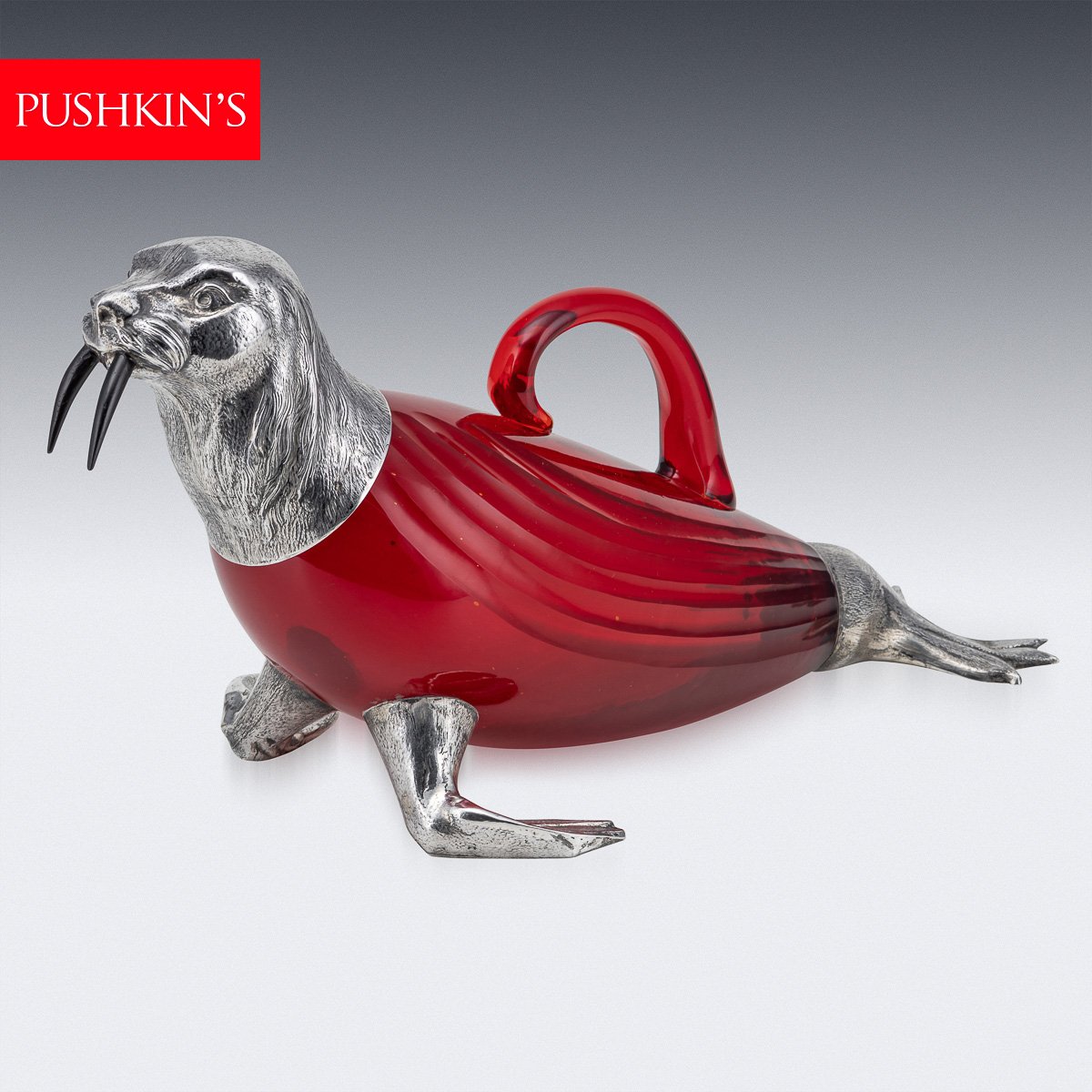
German Silver
During the second half of the 19th Century, a new fashion inspired by antique styles such as Medieval, Classical or Baroque widespread in Europe and influenced revivals in architecture, fine art and decorative art.
In Germany this manner became particularly popular and was known as Historismus, consisting in copying or re-elaborating historic styles and famous museum objects. The historicist style had a huge impact on the decorative arts, and particularly on silverware.
Many manufacturers in Europe and USA produced pieces inspired by old silver, but this didn’t represent a problem since modern silver was marked according to the laws of the country of origin. Contrary to this, silver manufacturers active in the German city of Hanau chose to mark their production with fantasy marks. It’s hard to say if the original intention was to deceive, selling modern pieces as new – surely has to be noted that often the marks were inspired or copied from the 18th Century French pieces and old German examples, harmonizing the style of the piece.
The type of marks used in Hanau in the late 19th Century and early 20th Century would have been illegal in England and France, but Hanau had a long tradition as a free-trade city, being exempt from duties on silver (and consequently regulated hallmarking) since the 16th Century.
From the mid-19th Century, following the growing demand for luxury goods and the fashion for highly decorative pieces, a great number of Hanau silversmiths started producing silver objects inspired or copied from the antique pieces.
J. D Schleissner, consequently Schleissner & Sohne, was among the first silversmiths producing silverware in the Renaissance, Baroque and Rococo style. Daniel Philipp August Schleissner (1825-1891), son of the founder, was a great admirer of antique silverware and had studied many private and public collections of genuine old silver. The portion of Hanau production comprising exact copies of authentic old silver, and left unmarked, still represent a problem for dealers, art historians and collectors.
Nevertheless most of the Hanau production is characterised by a fantastic combination of different styles, often blending elements from Rococo Watteauesque scenes with Baroque and Renaissance elements, or creating impressive and original Gothic-revival pieces such as the magnificent silver cup and cover by Wilhelm Heinrich Hubert Laufs, dating to the mid-19th Century and most probably made to be exhibited (the cup is published as one of the earliest and finest examples of Hanau silver).
Hanau silverware is distinguished by a highly decorative design; the items are profusely chased, engraved, pierced and embossed. It comprises all sorts of items: common tableware, monumental cups and centrepieces, boxes and caskets, decanters and claret jugs, unusual novelties such as jewelled figures, silver ornaments in the form of animals and figural drinking vessels inspired by the early German pieces.
In the late 19th Century the main manufacturers such as Schleissner, Georg Roth & Co and Neresheimer (probably the most renown and productive Hanau firm) were often using pseudo-marks as actual maker’s marks, suggesting that the idea of deceiving collectors was far from their intention. The most common Schleissner mark is an eagle and crown combination, Neresheimer used the well-known “n” in a shield, or TG below a fleur-de-lys, while Roth used a crowned GR, in the style of the early French maker’s marks.
German silver is usually marked “800” (more rarely “Sterling Germany”, for the 20th Century pieces), as by law it has to be at least 800/1000 coin standard. This doesn’t necessarily mean that Hanau silver purity is always 800/1000. A large amount of Hanau silver was made to be exported (mostly to England and America), being further hallmarked with sterling silver marks, proving that the silver content is often 925 sterling, therefore higher than the standard required by the German law. Neresheimer & Co, for instance, enjoyed a long and successful business relation with Berthold Mueller, agent in London and Chester: these products are always hallmarked with English import marks (lion rampant, 925 sterling silver).
















